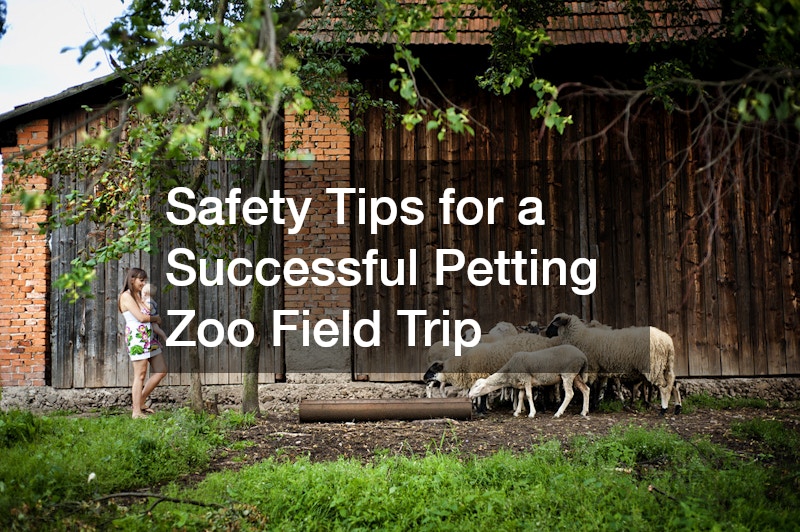Planning a field trip to a petting zoo can be an exciting and educational experience for children. However, ensuring everyone’s safety is paramount. This guide provides practical safety tips to help you organize a successful and enjoyable petting zoo visit.
How to Prepare for a Safe Petting Zoo Field Trip
Researching the Petting Zoo
Before committing to a visit, it’s essential to research the petting zoo thoroughly. Check online reviews to gauge the experiences of previous visitors and scrutinize the establishment’s safety protocols.
Contact the zoo directly to inquire about their policies on animal interactions, cleaning routines, and the safety measures they have in place.
Additionally, assess the facilities provided by the petting zoo. Ensure that there are adequate handwashing stations, restrooms, and shaded areas for rest if the weather is hot. This preparation will aid in anticipating and minimizing potential risks during the visit.
Preparing Students and Chaperones
Preparation involves briefing students and chaperones on essential safety and behavior rules. It’s vital to emphasize the importance of listening to instructions and not approaching animals without supervision. Inform children about the appropriate attire, such as closed-toe shoes and hats, to ensure safety and comfort.
Chaperones play a critical role in maintaining group safety and should be well informed of their responsibilities. Provide them with a detailed itinerary and contact list for emergencies, ensuring smooth communication throughout the trip. Clear communication will help in managing the group effectively and minimizing risks.
Pack Essential Supplies
Ensure to pack a well-equipped first-aid kit for any minor injuries or emergencies that may arise. Include items such as band-aids, antiseptic wipes, and allergy medications. A comprehensive first-aid kit is crucial for addressing any immediate health concerns.
Hand sanitizers are indispensable supplies for maintaining hygiene, especially after petting animals and before eating. In addition to sanitizers, pack wet wipes as they are useful for quick clean-ups. Each child should be encouraged to carry their hand sanitizer for personal use.
Other essential supplies include sunscreen, water bottles, and snacks to keep everyone hydrated and nourished. Having these items readily available helps to ensure the comfort and safety of all participants throughout the day. Proper preparation goes a long way toward mitigating risks and enhancing the overall experience.
What to Do During the Visit for a Safe Experience
Supervising Interactions with Animals
Constant supervision is key when children are interacting with animals. Encourage children to approach animals slowly and calmly, respecting their space to avoid startling them. Providing guidance on gentle touch and observing the animals’ reactions are essential in preventing accidents.
Limiting group size during animal interactions can help ensure that each child receives adequate supervision. Organize small groups and rotate them through different stations to manage safety better. This structure allows for a more controlled environment where rules can be consistently enforced.
Maintaining Hygiene and Cleanliness
Encouraging regular handwashing is vital for maintaining health standards during the trip. Ensure that children wash their hands after touching animals and before eating or drinking. Setting aside dedicated time for handwashing helps reinforce its importance in preventing the spread of germs.
Providing hand sanitizers at various points during the trip can support the maintenance of hygiene. Instruct children on the importance of keeping their hands away from their faces until they have been thoroughly washed. Hygiene practices are a crucial aspect of the petting zoo experience and can prevent the spread of zoonotic diseases.
Managing Group Movement and Activities
Managing the movement of the group is vital for ensuring safety during the trip. Implement a buddy system for children to reduce the likelihood of anyone wandering off. This system instills a sense of responsibility and keeps the group organized.
Plan structured activities, such as guided tours or interactive tasks, to keep children engaged and under supervision. An active and occupied group is less prone to accidents. The itinerary should allow time for both exploration and rest to cater to children’s varied needs.
Clearly marked meeting points and regular headcounts are effective strategies to maintain group cohesion. Providing whistles or distinctive attire can help chaperones quickly identify and gather the group if necessary. These measures contribute to an orderly and secure field trip experience.
A successful petting zoo field trip combines educational fun with stringent safety measures. By preparing carefully and maintaining vigilance during the visit, you can provide a memorable and safe experience for everyone involved. With detailed planning and executed strategies, the trip can be both enjoyable and enriching.
.


